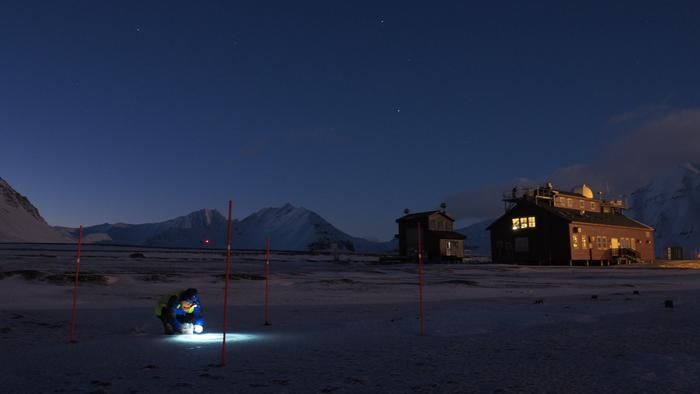As pure as the driven snow? Well, not so anymore, as a new study has shown that traces of sunscreen have been found in snow at the North Pole, on the glaciers of the Svalbard archipelago.
In the last few decades, legacy contaminants have been turning up in Arctic environments. Through international efforts and regulations, these contaminants have decreased. However, now there is another category of chemicals: Chemicals of Emerging Arctic Concern (CEACs).
A study was conducted to monitor the presence of personal care products in the Arctic. Researchers from Ca’ Foscari University of Venice and the Institute of Polar Sciences – National Research Council of Italy (CNR-ISP) collaborated with University Center in Svalbard (UNIS), to measure the concentration and investigate the origin of these products.
Between April and May 2021, samples were collected from five different glaciers across the Brøggerhalvøya peninsula. The sites ranged from those close to human settlements to remote locations, and the samples revealed chemicals never before identified in the Arctic snow.
Snow sampling at Ny-Ålesund, Svalbard.
Image credit: Marco Vecchiato, CNR – Ca’ Foscari University of Venice
“Many of the contaminants we have analysed, such as Benzophenone-3, Octocrylene, Ethylhexyl Methoxycinnamate and Ethylhexyl Salicylate had never been identified in Arctic snow before,” said Marianna D’Amico, a PhD student in Polar Sciences at Ca’ Foscari University of Venice and first author of the study, in a statement.
“The results show that the presence of emerging contaminants in remote areas can be attributed to the role of long-range atmospheric transport,” explained Marco Vecchiato, researcher in Analytical Chemistry at Ca’ Foscari and co-author of the paper. “In fact, the highest concentrations were found in winter deposition. At the end of winter, contaminated air masses from Eurasia reach the Arctic more easily.”
“The most noticeable example concerns certain UV filters normally used as ingredients in sun creams. The highest winter concentrations of these contaminants can only be traced back to the continental regions inhabited at lower latitudes: in Svalbard, during the Arctic night, the sun does not rise and sunscreens are not used,” Vecchiato explained.
“It will be crucial to understand how these contaminants are transported and deposited in polar areas, especially in relation to variations in local seasonal conditions,” concluded Andrea Spolaor, a researcher at CNR-ISP. “Such conditions are rapidly changing in response to climate change, which occurs four times faster in the Arctic than in the rest of the world.”
These types of studies are incredibly important for Arctic environmental protection, as they will contribute to monitoring programs.
The study is published in the journal Science of The Total Environment.
Source Link: Contaminants From Sunscreen Found In Arctic Snow For First Time
